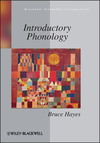 An Introduction to Element Theory
An Introduction to Element Theory
By Philip Backley
Describing a new and appealing way of analysing speech sounds, this book introduces you to the theory of elements in phonology.
Traditional features are capable of describing segments and segmental patterns, but they are often unable to explain why those patterns are the way they are. By using elements to represent segmental structure, we begin to understand why languages show such a strong preference for certain kinds of segments, contrasts, phonological processes and sound changes.
Using examples from a wide range of languages, this book demonstrates the process of analysing phonological data using elements, and gives readers the opportunity to compare element-based and feature-based accounts of the same phonological patterns. Backley also challenges traditional views through his innovative analysis of English weak vowels and diphthongs and his unified treatment of linking r and intrusive r as glide formation processes.
Providing a thorough introduction to the main topics in segmental phonology, this is an excellent overview for both students with a background in standard phonology as well as for those who are new to the field.
Key Features
· Provides a full and up-to-date description of Element Theory
· Includes examples from many languages and various dialects of English
· Further reading suggested for each topic
· Contains over 100 illustrations, including spectral and spectrographic figures
Pb ISBN 978 0 7486 3743 0 | £24.99
Available from Edinburgh University Press

 An Introduction to Element Theory
An Introduction to Element Theory
 The Contrastive Hierarchy in Phonology
The Contrastive Hierarchy in Phonology Introductory Phonology
Introductory Phonology

 Syllable Structure: The Limits of Variation
Syllable Structure: The Limits of Variation




